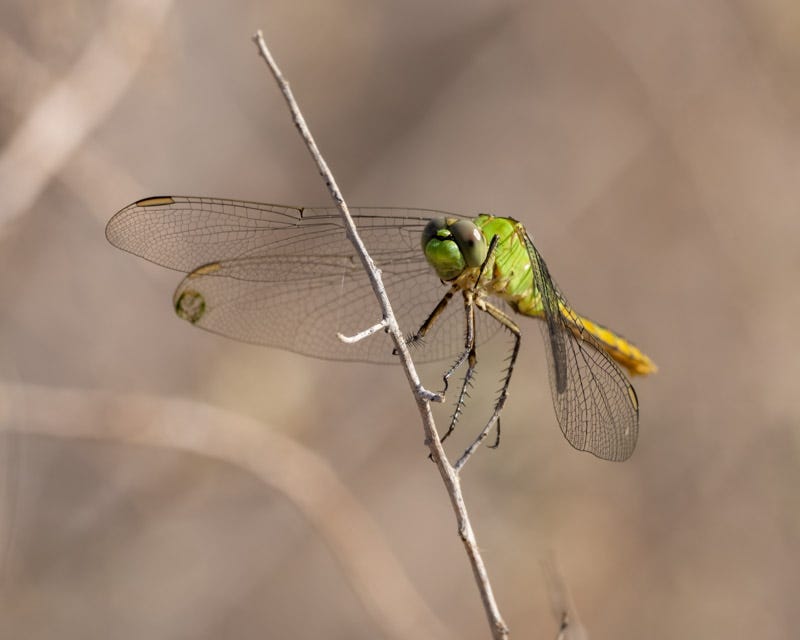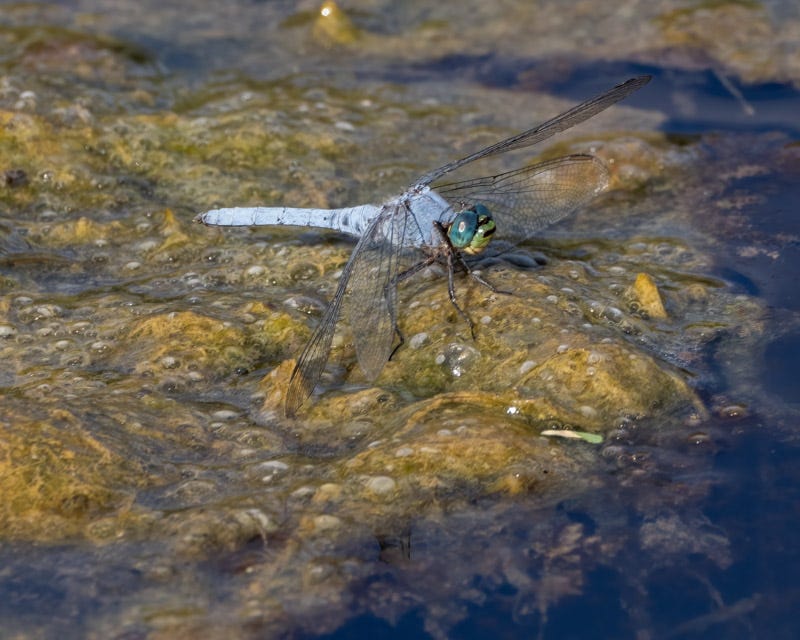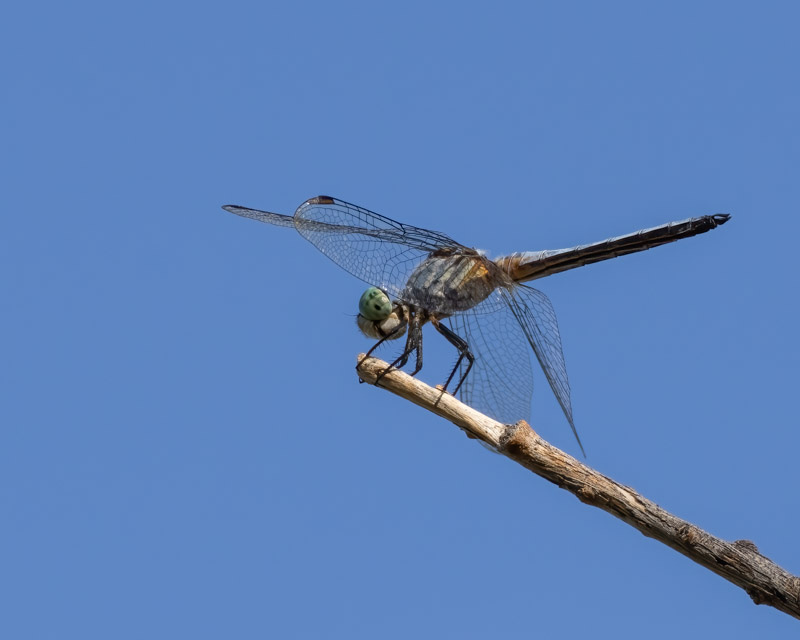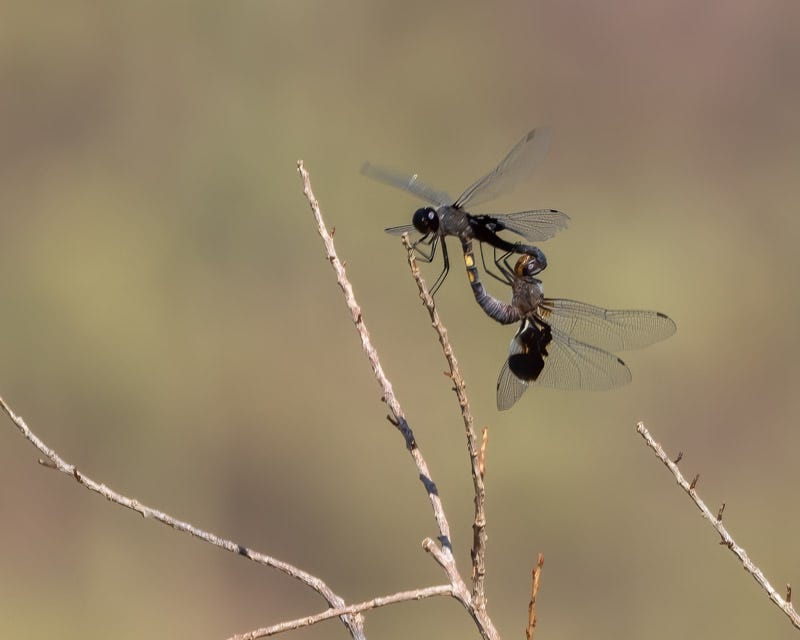More Dragons and Damsels
From a trip to the water's edge at El Rio Preserve
From a trip to the water's edge at El Rio Preserve
The City of Marana's Department of Natural Resources offers regular outings to El Rio Preserve to learn about the wildlife there. Recently I went on a Dragonflies and Damselflies walk led by Jeff Babson. One of the larger and more common dragonflies on our walk was this female Western Pondhawk. The female's emerald green body has yellow on the abdomen contrasting with the male's powder blue thorax and abdomen
Here is another female Western Pondhawk on a dead reed just a few feet from the water's edge.
Damselflies differ from dragonflies and are usually smaller and have slimmer bodies. Most Damselflies fold their wings along the body when at rest. Dragonflies usually hold their wings flat and away from the body. This is a female Rambur's Forktail, similar to one that I shared recently.
Another Rambur’s Forktail from a different angle. You can see how this damselfly's eyes bulge and see how she places her wings at rest alongside her body.
Perhaps the most common dragonfly in our area is the Blue Dasher. Its green eyes and light blue body are distinctive. The body looks like it is covered in a chalky substance. That coating is called a "pruinescence". It is caused by a waxy substance and is a common feature seen in other dragonflies.
The next dragonfly looks very much like the Blue Dasher above. The only difference is the yellow striping on its thorax. I believe that shows that this Blue Dasher is a juvenile.
Two Black Saddlebags were a distance away and in the "wheel" or "heart" formation. These dragonflies were mating. To read a somewhat humorous explanation of this process, see this Good Natured blog .
Another fascinating insect we saw on our walk was this Blue Mud Wasp. This wasp has a lifestyle similar to the locally more famous Tarantula Hawk. Both wasps hunt spiders and then paralyze spiders to lay their eggs on. When the eggs hatch, the larvae feed on the living but paralyzed spider. The Tarantula Hawk specializes in hunting Tarantulas, while the Blue Mud Wasp will hunt any number of other spider species. We saw it walking on the ground rapidly and exploring every little crack in the dried mud. The Forest Service tells us more about this insect.
The final dragonfly of the morning was this Widow Skimmer perched on a distant branch. The male Widow Skimmers have distinctive wings that are black at the base followed by a wide white band.
Any walk taken near water in Tucson is always nice. It is good to see the birds attracted to that habitat and, at this time of year, the dragonflies and damselflies just enhance the natural beauty of those areas.











Beautiful creatures and learned so much about them with your detailed descriptions. Thank you!
Thanks for the great collection of beautiful shots of fascinating insects.